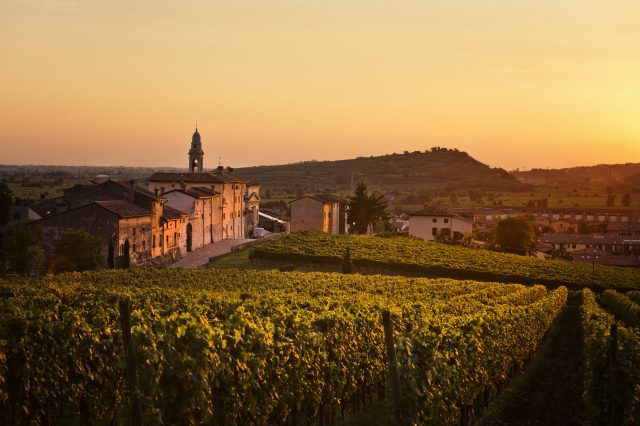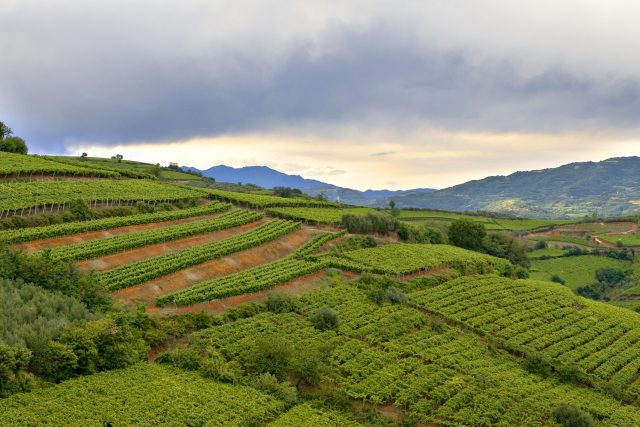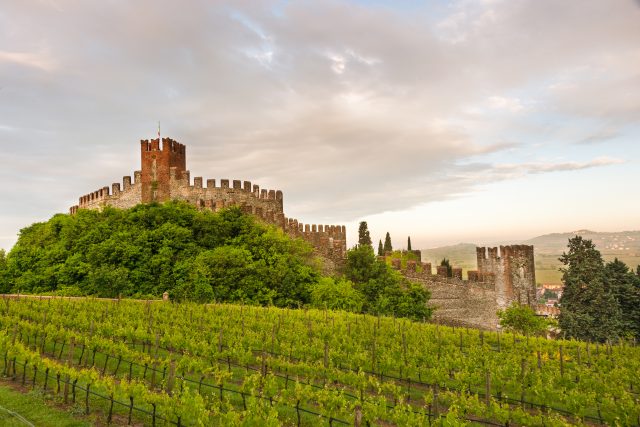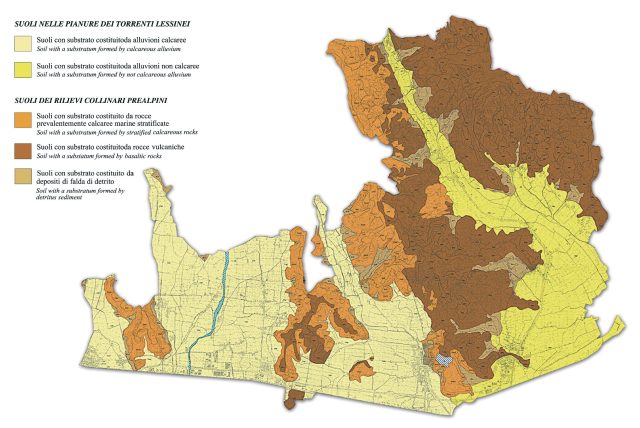Exploring the terroirs of Soave
The Northern Italian wine region of Soave contains a multitude of terroirs, enabling it to produce a variety of white wine expressions.

Located to the east of Verona, Soave has had Denominazione di Origine Controllata (DOC) status since 1968, while Recioto di Soave and Soave Superiore have have Denominazione di Origine Controllata e Garantita (DOCG) accreditation since 1998 and 2001 respectively. The region as a whole is some 6,300 hectares in size, about half the size of Burgundy.
Within the region as a whole there are then 33 Unità Geografiche Aggiuntive (UGA), or Additional Geographical Units. The Soave equivalent of a ‘cru’, these can be stated on the bottle’s label if production can be traced back there.
The key Soave grape is Garganega. This white grape can give aromas of almonds, green apple and white flowers once vinified, and must constitute at least 70% in a blend. The remainder, up to 30%, can be filled by Chardonnay and Trebbiano di Soave, the latter of which can add some softness and round out the wine’s structure.
While the topic of the growing environment in Soave is a complex one with a great degree of nuance, there are four key terroir types that should be considered when selecting the right Soave for you.
Volcanic hills

Located in the central and eastern parts of the Lessini Mountains, the colour of the soils can be anything from grey to yellow to orange, something which is largely dependent on the level of oxidation they have undergone. The hills with a basaltic substratum are more commonly found in the east of Soave. Altitude ranges significantly from 50 to 550 metres above sea level.
Around half of the vines in this production zone are more than 30 years old, and Garganega is the undisputed king here, making up 95% of the wine grape varieties cultivated.
The resultant wines are generally higher in acidity, partly due to the cooler conditions of high altitude preserving freshness in the fruit. The Pergola Veronese training system, whereby the fruit is shaded from the sun by the vine leaves, also helps. The distinctive aroma of wines from this area is cinnamon, a consequence of the soil’s high benzenoid content, with notes of cherry and almond.
Volcanic plain
The Monteforte Valley is one of the most fertile areas of the region, with its combination of clay and volcanic debris. While fertile soils are generally seen as being good for yields, but to the detriment of overall wine quality, this is not strictly the case in Soave.
Due to its ability to hold onto moisture, the clay in the soils is a major asset during hot summers, keeping the vines healthy and enabling freshness in the final wine.
Once again, there are aromas of cinnamon, cherry and almond, but also with a hint of berries.
Calcareous hills

Partner Content
The gentle foothills to the west of the Lessini Mountains have shallow soils, with the vine’s roots only being able to reach about 50cm down, and low water retention due to the amount of stony material.
The preferred training method here is the espalier system, as opposed to the more traditional Pergola Veronese, as it is possible to use this system alongside mechanical harvesting. Due to the soil’s limited water and stoniness, the vines typically show far less vigour here. With less leaf cover, the grapes do tend to ripen more rapidly – but not at the expense of elegance.
The grapes here have high levels of terpenes, the group of aromatic compounds that can lend a notable floral aspect to the wine. Fresh citrus and ripe, tropical fruit are also apparent on the nose.
Calcareous plain
Compared to the hills, the soil on the plains is better suited to agriculture due to a lower amount of stone and deeper active stratum.
The active limestone that is found in the soil of the Soave and Colognola plains results in wines that retain acidity. While generally finely textured, around streams the soil will have a greater proportion of large rocks and sand.
Wines from these areas of Soave will typically display aromas of white flowers and violets.

Protecting these unique growing environments, that create such unique wines, is a key priority of the Soave Consortium.
In addition to closely monitoring the effects of climate change, the consortium is also a keen advocate of proper soil management, particularly in terms of reducing the effects of soil erosion and research into the region’s hydrogeological risks.
The landscape of the region is defined by viticulture, and the future of its wine production will be determined by what actions are taken today.
To read about how Soave aims to be “young, beautiful and smart”, click here.

Related news
Campari sells Averna and Zedda Piras, raising £88m




